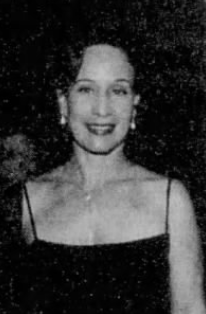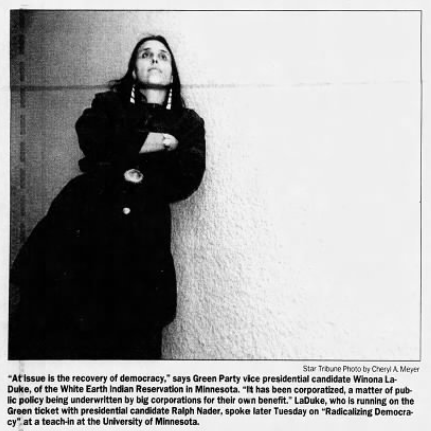Patrick Star, May 1, 1999 (Burbank, Calif.) -
VP candidate for Independent (2016)
VP candidate for Green Party (2020)
Running mate with nominee (2016, 2020): Spongebob Squarepants (b. 1997)
Popular vote (2016, 2020): ? (0.00%)
Electoral vote (2016, 2020): 0/538
The campaign (2016):
You just knew this was coming. The popular animated character Spongebob Squarepants, originally unleashed upon the world via the Nickelodeon Animation Studio, has been mentioned as a Presidential candidate ever since 2000, mostly through the efforts of a dedicated fan base. In 2012 a Spongebob for President book was published. By the 2016 election he had gained a running-mate in the form of his dimwitted sidekick and neighbor, Patrick Star.
Star himself was also a Presidential candidate in 2008, 2012, 2016, and 2020. During the 2007 television season, Patrick ran for President against Larry the Lobster.
While campaigning for Clinton at a rally in Michigan, President Obama revealed he was a Spongebob fan.
Some of the practical obstacles faced by the Squarepants/Star ticket in the event of their victory would have included their ages, citizenship, residency, and fictitious status.
The campaign (2020):
In 2020 an interesting Squarepants/Star campaign website surfaced, claiming the duo were running under the banner of the Green Party, which is perhaps different than the official Green Party of the United States. The contact was M.G. Najera with an email connected to Chicago Public Schools. The product could possibly have been a school project.
The website had a serious platform--
Poverty
Everybody has a right to basic needs, medical care, education and jobs with good wages. If he takes part of the military budget he will be certain of putting it into family support, and jobs that train you. This will increase the employment rate. Spongebob will create a federally funded program to help children, families, the unemployed, elders, and disabled.
Education
Everybody has a right to education. He believes to give college tuition to those who qualify.He will increase college financial aid. Spongebob will abolish junk food and create healthier menus for our students. expand more programs such as PE, Art, Music, Science, and language programs,. Students will have a place where they can learn and expand their knowledge and also be creative. Also expanding programs like Bilingual Education. And teaching students to be active citizens
Immigration
Migration is a human right. Spongebob will strive to grant permanent border passes to all Mexican citizens, but he will also attempt to give undocumented immigrants in America a chance to become an American citizen. Spongebob will also advocate for better treatment towards children regarding family separation because no one should be separated from their loved ones.
Crime
Spongebob will increase the resources provided to improve train stations, staff utilities, schools, public parks, and any other public place. he’ll improve street lights, erase all graffiti, and reduce any suspicious drug related crime. Spongebob will also make high quality youth facilities accessible to everyone. Spongebob believes that we need to be more focused on crime prevention and not harsh punishments that's why he is advocating to abolish the death penalty, and the “3 Strikes You’re Out” Law
Violence
Spongebob will eliminate deadly lethal weapons. He will advocate peace with all people will help prevent violence because it can resolve the terrorism issues in a peaceful way. He will also remove the nuclear bomb testing since it can negatively impact our health such as people getting cancer.
Diversity
Respecting people’s traditions is important because every culture has their own way to express it. Respecting peoples religion is important and also respecting race and valuing the citizens opinions. They will defend the rights for all people for basic rights to survive. Respecting their culture background and language without any discrimination.
LGBTQ Rights
Spongebob firmly believes in LGBT rights. He will try to reduce hate crimes against the LGBT community. He promises that as president he will tackle the issue of bullying against the LGBT youth. Spongebob also ensures that he will fight for transgender rights. Spongebob will fight for an explicit ban on the discrimination against people over their sexuality or gender identity at federal level.
Environmentalism
Spongebob and Star will make sure toxins and pollution do not harm the poor or people of color. Spongebob will devote greater efforts to full enforcement and prosecution of environmental crimes. He will also redirect funds away from animal experiments and towards biomedical research. He will push for agricultural practices that replenish the soil instead of potentially harming it. He will advocate for environmental taxes, so that industrial pollution can be taxed.
Feminism and Gender
Spongebob believes in equal rights for both men and women. Women should be allowed to be paid the same as a men who do the same job. Spongebob will create equal opportunity based on gender. Spongebob believes that no matter what your gender is you, should have the ability to get the same job for the same price.
Interest Groups
These interest groups can help Spongebob get elected by endorsing him and the issues he stands on. They can also conduct grassroots activities like a get-out-the-vote drive. Finally, all these interest groups may form Political Action Committees (PACs) to raise campaign contributions for endorsed candidates
Environmental Defence Fund
National Hispanic Leadership Agenda
Gay and Lesbian Advocates & Defenders
CASA In Action
National Education Association
Election history:
2008 - US President (Independent) - defeated
2012 - US President (Independent) - defeated
2016 - US President (Independent) - defeated
2020 - US President (Independent) - defeated
Other occupations: fictitious character
Notes:
Early in his career, Sam Henderson and I corresponded and were active in the Newave Comix movement of the 1980s. Later he went on to be one of the writers for Spongebob Squarepants. Is that neato or what?










































